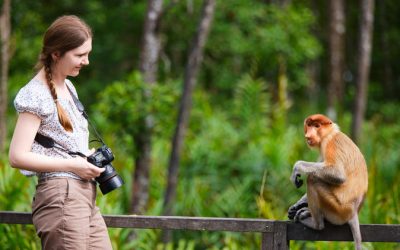History & Culture of Laos

History
Laos is a country with a very long and complicated history. The Lao people are traditionally very patriotic and, over generations, have continued to fight for the socio-economic upliftment of their nation. Chao Fa Ngum was the first King to bring the Lao people together and declare Laos as a unified state: the Lanexang Kingdom. The world famous city of Luang Prabang served as the capital of the state until the middle of the 16th centure when King Saya Setthathirat transferred the capital to Vientiane in order to improve the economy.
In the middle of the 17th century, the unified state reached what is often considered to be its “golden age”, when a Dutch delegation negotiated and established a trade agreement with Laos. Unfortunately, this “golden age” did not last long and by the early 18th century the monarchy had declined and the Siamese invaded the country and continued to control it until 1893 when the French conquered Laos.
World War II was the next big turning point for the Laotian people as they began their fight for independence. Finally, in 1945 their goal was achieved and, for the first time, Laos made its way onto the world map. However, in 1946 the French reinvaded the country, subsequently reigniting the people’s battle for independence which was finally won when the Geneva Accord was signed.
However, shortly after this victory, in 1964, the American Air Force began to bomb Laos. These bombings were under the pretenses of fighting communism and stopping traffic along the Ho Chi Minh Trail. Over the next 9 years, the American Government ordered approximately 2 millions tons of bombs to be dropped in the country, the heaviest aerial bombardment in world history and one that would severely impact Laos and the Laotian people.
In 1975, the People’s democratic republic of Laos was established, allowing Laos to enter a new and more peaceful era in which the Lao people and the various ethnic groups that reside in the country could live free of the horrors of colonialism and war and focus improving the systems within their country.
Today, the country is politically stable, the economy has improved greatly and the government is working towards equality and justice for the people of Laos.
Culture
Lao, a tonal language, is very similar to Thai and there is a lot of language overlap between Thailand and Laos. For example, a high percentage of the population of the Isaan region in Thailand are actually raised speaking Lao instead of Thai. The majority of the population are practitioners of Theravada Buddhism and it reflects greatly on the culture of the country and its people.
When greeting people, a slight nod of the head is deemed acceptable and handshakes are becoming more and more common in the country. Traditionally, Lao people greet each other with a prayer-like gesture called a nop – still practiced in their culture today.
Public displays of affections or acting out in any way in public is considered unacceptable by the people of Laos and showing any kind of aggression to a Laotian person will not prove to be effective. It will be considered rude and only make the other person feel uncomfortable.
Shoes must be removed before entering any temple, home, and even some businesses. The feet are considered to be the dirtiest part of the body and therefore should not be shown to anyone and gestures should not be made with the feet. The head is considered the most sacred part of the body and, therefore, is also off limits for touching as it is considered very disrespectful.
News & Magazine
Mekong River Cruise
The Mekong River is the 7th largest river in Asia and is over 2,700 miles long. The river starts in the mountains of China and travels through the Golden Triangle of Myanmar, Laos, and Thailand. The Mekong then continues to run south acting as a border between...
Laos Mountain and Nature Tours
There are so many mountain and nature tours available in Laos that you’ll never be stuck for something to do. Whether it’s off-roading in Luang Prabang or hiking in Luang Namtha, Laos provides a stunning and interesting trip for anyone looking for natural adventures....
9 Tips for Travel Safety when you’re Abroad
Millions of people each year take vacations abroad and Southeast Asia is a particularly popular destination. Most of these people visit new countries without incident, but sometimes things can go wrong. Here are 9 travel safety tips for when you’re abroad. Don’t Dress...
We are a registered tour company based in Southeast Asia. Our goal is to provide travelers the safe way to travel, feel warm, reliable and meet the right locals! More about AAT, here you are https://adventureasiatravel.com/about/ at the bottom











